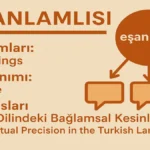Introduction
What made the Mongol warriors nearly unstoppable in the 13th century? While leadership and tactics played a part, much of their battlefield success was forged in the intricate design of their armor. The secrets of Mongol armor reveal not just protection, but a fine balance of mobility, durability, and clever engineering.
In this article, we dive deep into the fascinating world of Mongol armor—an ancient marvel that still amazes historians and military engineers today.
Origins and Evolution of Mongol Armor
Mongol armor did not develop in isolation. Drawing inspiration from neighboring cultures like the Chinese, Persians, and Turks, the Mongols refined what they adopted. By the time of Genghis Khan’s reign in the early 1200s, Mongol armor had evolved into a hybrid system that was both functionally superior and uniquely suited to their fast-paced warfare.
Their armor was not static; it adapted based on terrain, enemy, and available resources. This flexibility in design was one of the secrets to the Mongols’ success.
Read: What is Arceus X? A Complete Guide to Roblox’s Most Talked-About Exploit in 2025
Key Features and Engineering Ingenuity
Mongol armor prioritized agility. Unlike the heavy plate armor of Europe, Mongol warriors used a combination of materials that offered protection without sacrificing speed:
- Lamellar construction: Overlapping small plates laced together, allowing flexibility.
- Layered defense: Padded undergarments paired with metal or leather outer layers.
- Modularity: Armor pieces could be added or removed depending on the mission.
This engineered approach meant a Mongol soldier could ride for hours, fight efficiently, and remain protected—all without the bulk of heavier armors.
Materials Used in Mongol Armor
The Mongols were pragmatic in their material choices. They utilized resources available across their empire:
- Hardened leather: Lightweight, durable, and weather-resistant.
- Iron and steel plates: Used sparingly but effectively in high-risk areas like the chest and shoulders.
- Silk: Surprisingly, tightly woven silk shirts were worn under armor to help prevent arrowheads from penetrating deeply, reducing injury severity.
The combination of organic and metallic elements offered a practical balance of strength and speed.
Tactical Advantages on the Battlefield
The design of Mongol armor enhanced several key battlefield advantages:
- Speed and mobility: Vital for their cavalry-based strategies.
- Reduced fatigue: Lightweight armor helped in long campaigns.
- Stealth and surprise: Flexible armor made less noise and allowed quick maneuvers.
- Adaptability: Units could adjust armor based on weather or terrain.
Their ability to move swiftly while protected was revolutionary for the time.
Cultural and Symbolic Significance
Mongol armor wasn’t just practical—it carried cultural weight:
- Rank indicators: Decorations or patterns often signified rank or achievements.
- Tribal influences: Regional variations reflected different Mongol tribes.
- Spiritual protection: Some armor included talismans or religious symbols for added spiritual strength.
The armor was an extension of identity, not just a tool for war.
Read: How to Delete a Cash App Account: A Step-by-Step Guide
Comparison with Other Ancient Armors
When compared to other ancient military armors:
| Armor Type | Weight | Flexibility | Material | Unique Trait |
|---|---|---|---|---|
| Mongol Lamellar | Light | High | Leather, Steel | Modular and adaptable |
| European Plate | Very Heavy | Low | Full Metal | Superior protection but low mobility |
| Samurai Lamellar | Moderate | Medium | Leather, Iron | Elaborate design and symbolism |
| Persian Mail | Heavy | Medium | Chainmail | Excellent slashing resistance |
Mongol armor found a rare sweet spot: strong enough to defend, light enough to move.
Legacy and Influence in Modern Military Design
While modern armies don’t ride horseback into battle, the principles behind Mongol armor live on:
- Modular body armor used today follows the same idea of adaptability.
- Lightweight materials like Kevlar echo the balance of flexibility and strength.
- Layered protection systems in tactical vests mirror lamellar construction.
Even centuries later, Mongol innovation continues to inspire military design.
Conclusion & Call to Action
Mongol armor stands as a testament to ancient engineering genius. More than just battlefield gear, it was a carefully crafted solution to the demands of a rapidly expanding empire.
If you found this article insightful, share it with history enthusiasts or drop your thoughts in the comments below. For more on ancient warfare innovations, subscribe to our newsletter or explore related articles on ancient military strategies.
Frequently Asked Questions (FAQ)
What was Mongol armor made of?
Primarily hardened leather, iron plates, and silk. This combination balanced protection and mobility.
Did all Mongol soldiers wear the same armor?
No. Armor varied by rank, tribe, and available materials. Elite guards had more ornate and stronger armor.
How did silk protect Mongol warriors?
Tightly woven silk helped prevent deep arrow wounds by keeping arrowheads from penetrating too far.
How did Mongol armor compare to European armor?
It was lighter and more mobile, which better suited their cavalry tactics.
Is Mongol armor displayed in museums today?
Yes, several museums worldwide, including the Hermitage and the National Museum of Mongolia, feature preserved examples.











